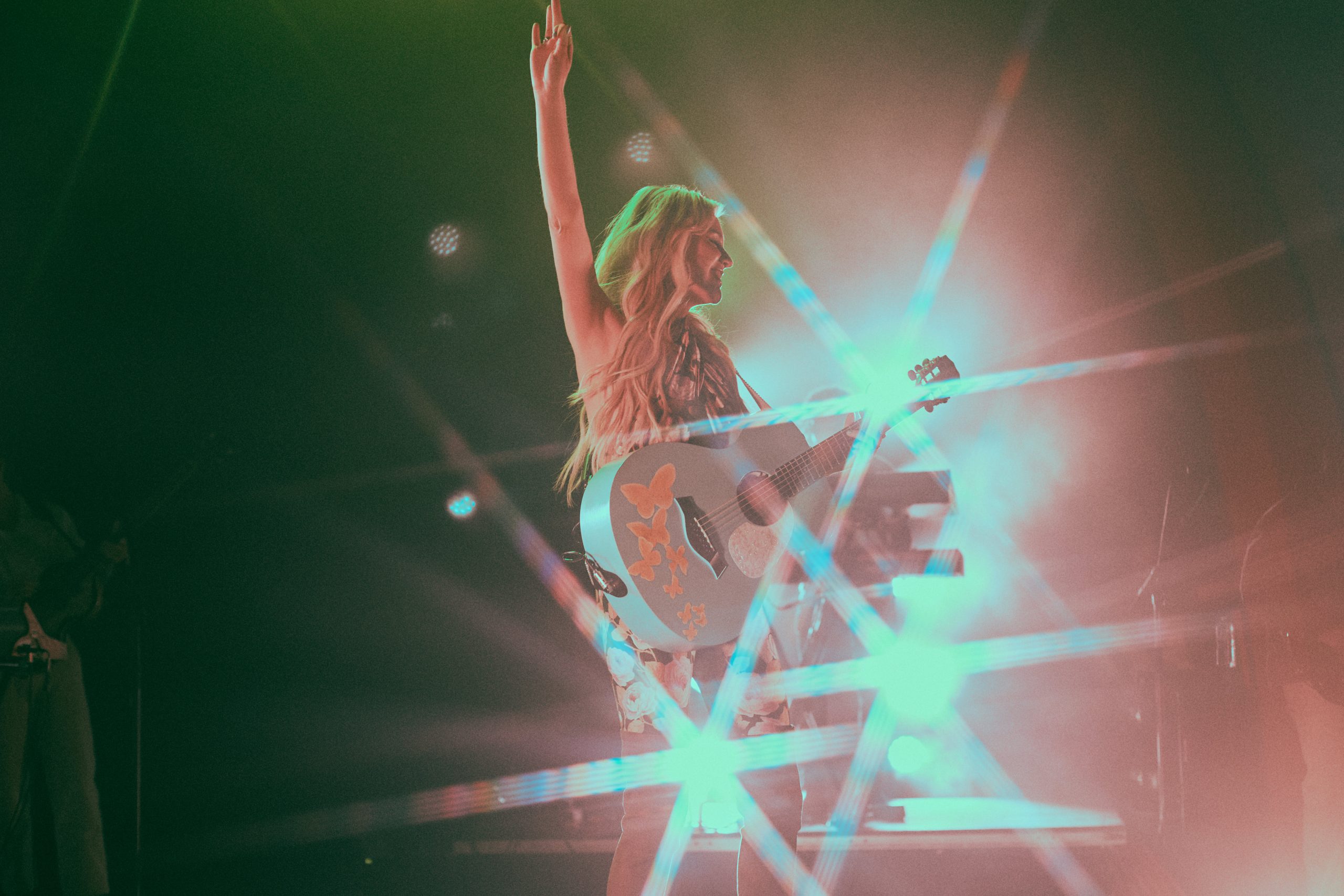As die-hard music fans, sometimes it’s not enough to just play our favourite songs on repeat over and over. Sometimes, we want to go behind the scenes and know everything there is to know about those songs and the artists behind them. (Not in a creepy way, of course.) Earlier this year, Julien Chang released a lovely new EP, Home For the Moment. The multi-instrumentalist was kind enough to walk us through each song on the EP, and provide some exclusive pictures from the recording process. Music theory aficionados will especially get a kick out of it. Read on below.
[Julien]: I wrote and recorded the full EP in one week at the beginning of December 2022. Some of the compositional material had come from brief sketches and impressions–usually nothing more than a particular chord-voicing, a rhymed couplet, or a contrapuntal micro-scheme–that had come to me over the course of the, say, six months or so before I began writing seriously. The conceptual-emotional basis for the song lyrics was formed in part during the final year of my undergraduate studies, primarily in 19th and 20th century “continental” philosophy, and in part by the experience of returning home after college and, as they say, spinning my wheels. The EP is a technical exploration of the possibilities that are afforded by compositional conventions found in both pop music and “art” music–namely, repetition and counterpoint. I mixed the whole EP using a +50 cent varispeed tape manipulation, essentially transposing each of the four songs up to the nearest quarter-tone above, into a “key” that is not playable on regularly tuned (A4=440 hz) instruments. I often do this while mixing my music because it makes it feel slightly estranged from me, like I am listening to my own song for the first time, sung by a different voice. In the case of this EP, I kept the varispeed as we went into the mastering phase in order to retain that original strangeness–which is, after all, one of the conceptual “themes” of the EP.
LOOKING AT PEOPLE
The writing started in earnest with ‘Looking at People.’ It was during the writing of ‘Looking at People’ that I had initiated and developed the compositional process that I would use for the EP as a whole. This process usually began with a simple harmonic idea. In the case of ‘Looking at People,’ I started with the B-section. The progression of the B-section is inspired by the bassline in the song ‘The Letter’ by Deux Filles (1982): the slow roving bass follows a syncopated pattern of [V, vi, ii, iii] in the key of D Major. With that simple pattern in mind, the next step was the careful arrangement of texturally intricate but harmonically repetitive counterpoint in the guitars which would sit on top of the bass, now serving as a kind of “cantus firmus.” You can hear this most clearly from 1:10-1:33 and 2:17-2:40. The A-section of ‘Looking at People’ (the verses) and the outro section then came together from initially separate song ideas: the former was initially going to have a stripped back folky kind of arrangement while the latter was initially conceived as a weirdo medieval pastiche. They fit together nicely in the end.

YOU HAVE THE WORD
The next song I wrote for the EP was ‘You Have the Word.’ This came two days after finishing ‘Looking at People.’ The title comes from the final words of the preliminary speech introducing Austrian novelist Peter Handke before his acceptance of the 2019 Nobel Prize in Literature: “Sie haben das Wort.” To give someone “the word” represents an unbelievable trust, and the mutual promise of good faith (Peter Handke’s case in particular demonstrates the failure of such trust and good faith).
I wrote and recorded this song the morning after I saw a Wheatie Mattiasich show at Fadensonnen in Baltimore. I also met Victoria Legrand from Beach House that night. I was moved by the show, by the deeply, darkly beautiful sound of what can only be called keyboard-voice melancholia. I wanted to try to reproduce that feeling. All of this was circulating in my mind the day I wrote ‘You Have the Word.’ It pretty much entirely centres around two chords: a IV or a ii-half diminished with a IV in the bass, and then the tonic I chord, home. I wanted the “drop” at 0:35 to sound both resolute and strange. I went about doing this by introducing both the steady, almost metronomic, drums as well as the octave-pitched and hard-panned electric guitars at the same moment. This combination of acoustic steadiness and digital strangeness played a major role in the mixing of this song as well.

IMAGO
This was probably the apogee of my project in writing texturally intricate but harmonically static (non-teleological) counterpoints. The counterpoint begins right at the beginning of the song in the guitars and carries on throughout until the very end, although obscured to varying degrees by the surrounding instrumentation. When the bass and keys come in at 0:32, they don’t follow a chord progression so much as a simple descending line held by the keyboard part. I was interested in composing a song that was conceived in terms of lines and textures rather than chords or chord progressions. Steve Reich, Fela Kuti, the Talking Heads–these serve as the main reference points for this kind of hyper-repetitive and highly texturally-involved music. Of course a more standard chord progression is introduced in the B-section at 1:05, but it mainly serves as an anchor point for the song before returning to the lines and textures in the second verse. The outro is announced with a sudden and unprepared harmonic modulation and an overflow of synth, guitar, and percussive textures.

HOME FOR THE MOMENT
The first three songs I had written for the EP had all had fairly similar structures: the introduction of a quiet, sparsely orchestrated idea, its development through layered additional instrumentation and contrapuntal lines, and finally an explosion at the end which is mediated by some kind of harmonic or stylistic modulation. The last song I recorded for the EP was ‘Home for the Moment.’ In this song I purposely tried to avoid such dynamic development and explosion in favor of sitting and dwelling in a particular feeling for the full duration of the song without leaving it. The scope is close, the sound is small. The instrumentation reflects the place of focused quiet (or disquiet) from which the song’s lyrical content emerges.
It is a song about enduring, about becoming comfortable with stasis (the stasis which interrupts transition and becomes part of the transition). It now feels right that the composition of the song performs exactly that kind of endurance, that kind of forgiving patience, the acclimation to stasis for the time being without disavowing the restlessness that animates it. The vocals were recorded with a Shure 520, the “green bullet” harmonica microphone–rugged technology that was originally designed in 1949 for radio transmissions. I suppose in a way this song is a kind of transmission, a message broadcasted in all directions from this small room that I am in. The addressee remains, however, totally obscure.
Home For the Moment is out now on all major streaming services. Pick your poison here.


